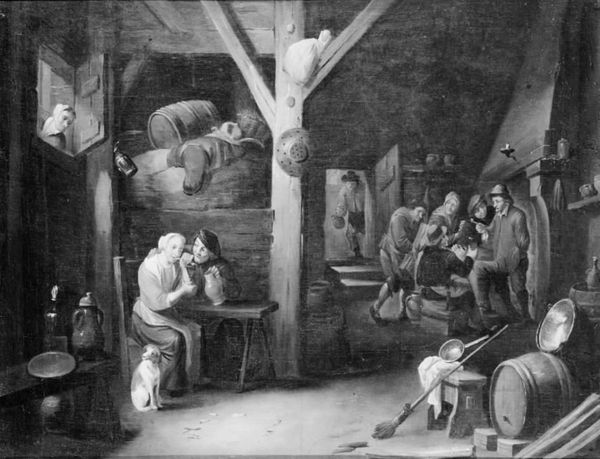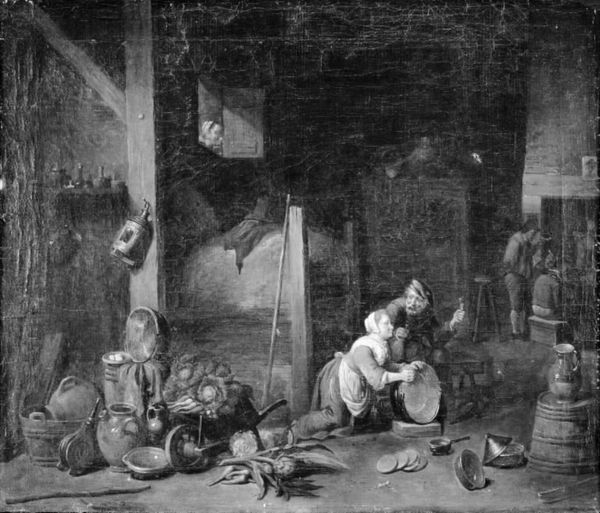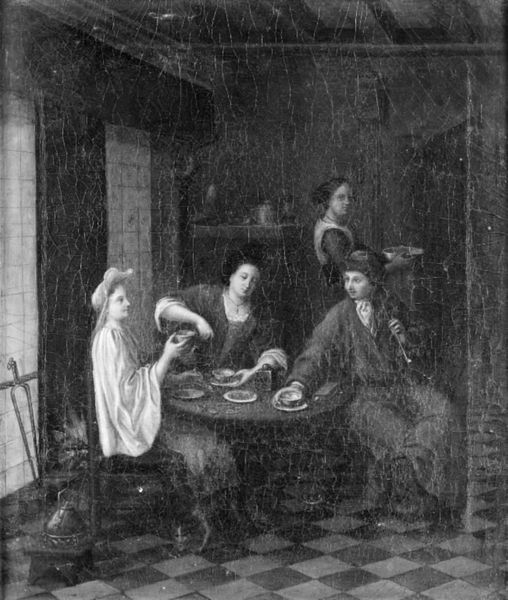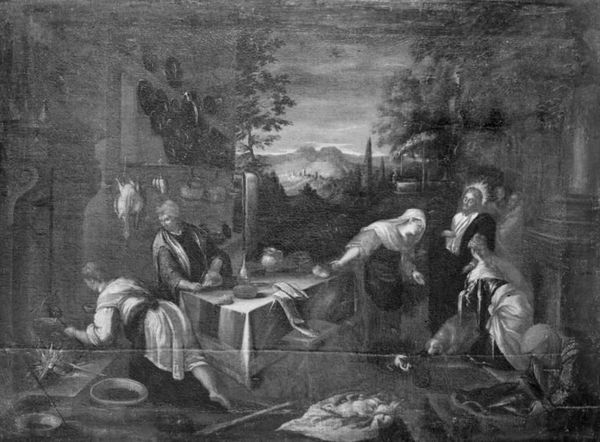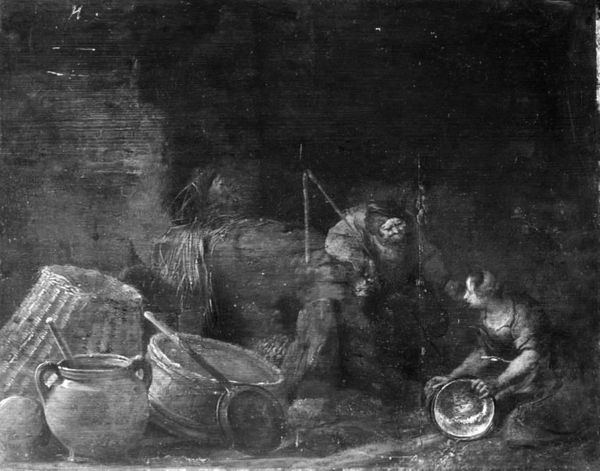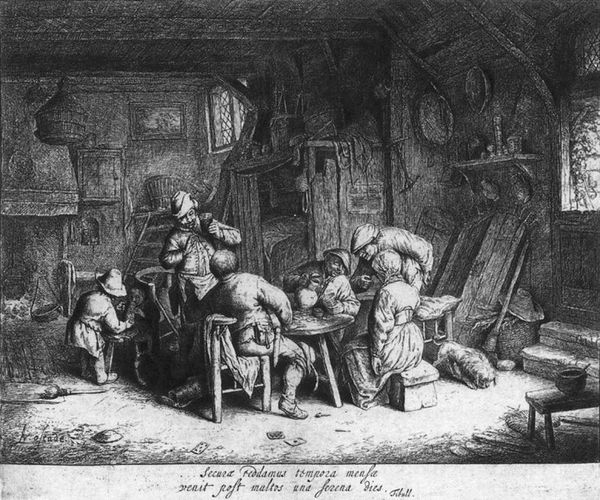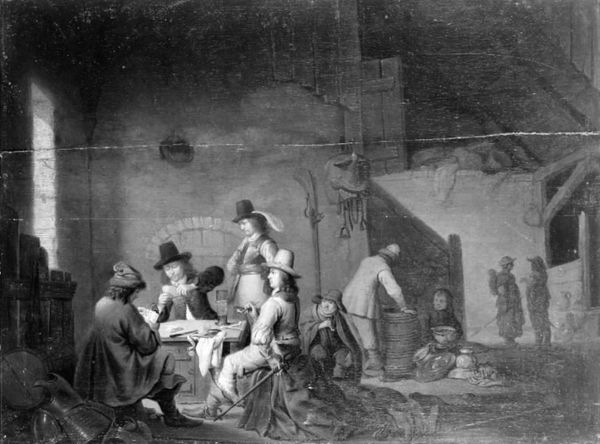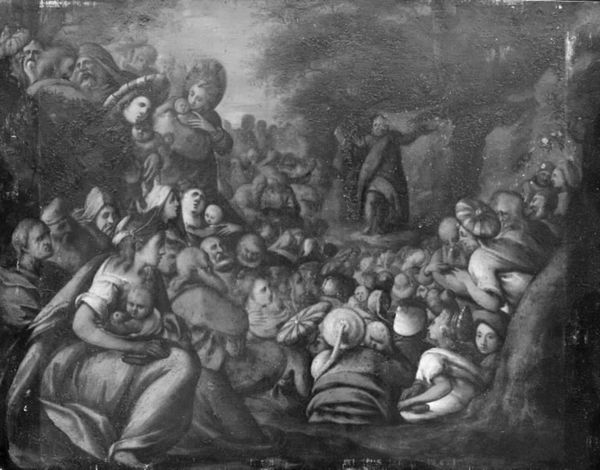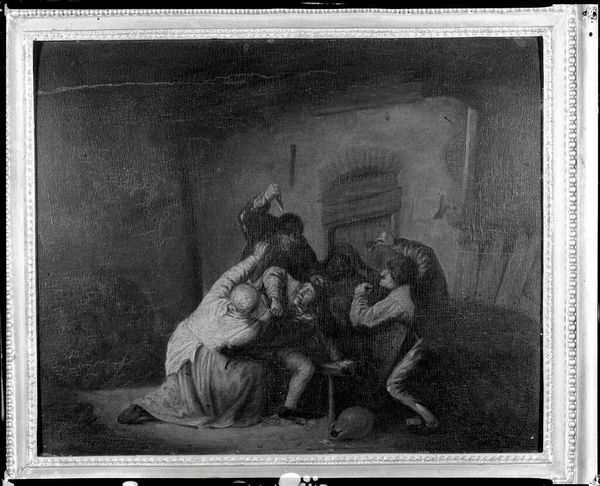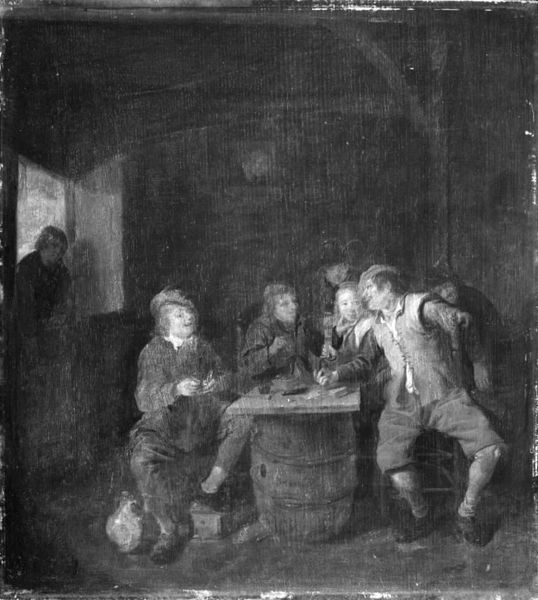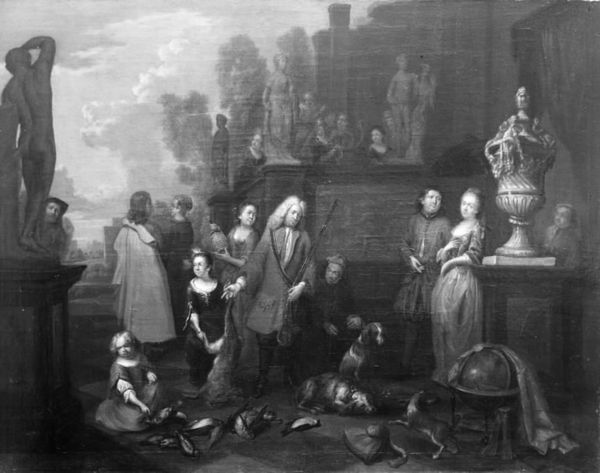
painting, wood
#
narrative-art
#
baroque
#
painting
#
figuration
#
wood
#
history-painting
#
monochrome
#
monochrome
Dimensions: 58 cm (height) x 81.5 cm (width) (Netto)
Editor: Here we have Hendrick Sorgh's "The Adoration of the Shepherds," created in 1642. It's oil on wood, and what strikes me is its monochrome palette, which adds to the humble and rather austere mood of the scene. How do you read this work? Curator: I see a fascinating emphasis on the material conditions of Baroque society. Sorgh depicts this biblical scene, but he does so by grounding it in the everyday. Note the rough-hewn textures of the wood panel itself; they mirror the scene within. The shepherds, often romanticized, are rendered as laborers. What does it tell us about class and devotion when even holy subjects are seen through a lens that recognizes the material reality of life? Editor: So, it’s less about spiritual reverence and more about... the daily grind, even for the divine? Curator: Exactly! And think about the wood itself – where did it come from? Who felled the trees, and how were they processed? By painting the scene on this material, Sorgh intertwines the narrative with an awareness of production. It blurs the lines between fine art and the craftwork involved in just providing the basic materials to produce fine art. Editor: I never thought about it that way, that even a devotional scene has these very earthly connections through the medium used to portray it! The monochrome aspect suddenly feels more purposeful too, less about aesthetics and more about underscoring a stark reality. Curator: Precisely! The subdued palette may be tied to availability and affordability of pigments, indicative of the social and economic reality. It begs the question: how did resources and even color, or the lack of it, shape the message being conveyed in religious art? Editor: That connection makes me rethink how I view art from this period. Thank you! Curator: And thank you for prompting me to consider this work with fresh eyes.
Comments
No comments
Be the first to comment and join the conversation on the ultimate creative platform.
